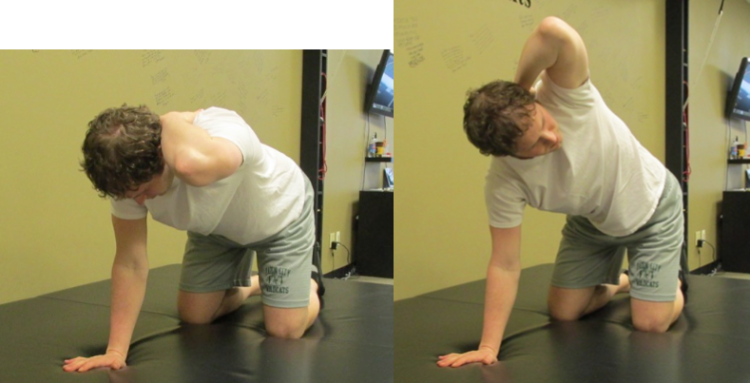http://suppversity.blogspot.ru/2015/10/post-workout-coffee-boosts-glycogen.html
 |
| Yes, I do suggest that it may be beneficial to drink these two and another two cups of coffee w/ lots of sugar after your workout - if you are an athlete, at least. |
If you look at the existing literature, the effects of post-workout caffeine ingestion are not exactly an intensely researched area. And still, the evidence does more or less strongly support the notion that a post-workout coffee could be as beneficial as its pre-workout analog - in a different area.
Initial evidence that the post-workout ingestion of caffeine may have beneficial effects on post-workout gylcogen resynthesis and thus an important part of the recovery process comes from a 2004 study by Battram et al. (2004). Back in the day, Battram assumed - just like you probably did - that the ingestion of caffeine after prolonged exercise would impede the resynthesis of proglycogen and macroglycogen carbohydrate supplementation in humans.
 | |||
| Figure 1: Total glycogen [proglycogen (PG) macroglycogen (MG)] glycogen concentrations during 5 h of recovery in the placebo trial (A) and caffeine trial (B | Battram. 2004). |
"In conclusion, Caf ingestion does not impede the resynthesis of PG or MG after an extensive depletion of muscle glycogen and with the provision of exogenous dietary carbohydrate" (Battram. 2004).As surprising as this may be in view of the inhibitory effect of caffeine on full-body glucose uptake (in Battram's study there was also a significantly higher blood glucose concentration in the caffeine
trial), Battram's results are still no outliers. Rather than that, a follow up study by Pedderson et al. found that, in trained subjects, coingestion of large amounts of Caff (8 mg/kg BM) with CHO has an additive effect on rates of postexercise muscle glycogen accumulation compared with consumption of CHO alone" (Pedderson. 2008).
- CHO [4 g/kg body mass (BM)] alone or
- CHO [4 g/kg body mass (BM)] with Caff (8 mg/kg BM)
 |
| Figure 2: High dose caffeine (8mg/kg) increases glycogen resynthesis after exhausting workouts without having ill effects on the resynthesis of ATP and PCr (Pedderson. 2008). |
Why would you say caffeine may have a partitioning effect? The answer is easy: While fat cells need insulin to transform and store significant amounts of glucose, muscle cells don't - specifically after workouts the increase in GLUT-4 receptor expression and glucose uptake occurs largely without requiring insulin as a trigger. Now, caffeine's ill effects on blood glucose are due to its ability to block the insulin signalling via beta-adrenergic activity (Thong. 2002). It should thus reduce the glucose uptake by the fat cells while decreasing the rate, but not the total amount of glucose that is taken up and stored by the muscle... speaking of rate and total amount: This hypothesis is fully in line with the initially cited study by Battram et al. who observed just that: a decreased rate, but identical total increase in muscle glycogen.
So why haven't we been taking our post-workout caffeine for years, now? Well, I guess the reason is that it is not sure how the effects of caffeine on the sympathetic nervous may effect other factors of the recovery process. In view of the fact the central nervous system will be "on fire" after any workout, though, it is questionable whether adding in 400-800mg caffeine will actually affect its recovery.
A better reason for not (yet) subscribing to the post-workout caffeine binges would thus be that (a) few of us actually need to refill their glycogen stores in 4-6h after a workout and that we (b) have no real clue what the mechanism is. If it was actually - as some of the data would suggest - a selective inhibition of fat cell glucose uptake (see box on the right), even those of us who don't have to restore their glycogen stores as fast as possible may see beneficial effects on body composition. If, on the other hand, it works by stimulating the intestinal absorption of glucose, only (cf. Van Nieuwenhoven. 2000), the real world implications for the average trainee would be significantly less pronounced | Comment on Facebook!
A better reason for not (yet) subscribing to the post-workout caffeine binges would thus be that (a) few of us actually need to refill their glycogen stores in 4-6h after a workout and that we (b) have no real clue what the mechanism is. If it was actually - as some of the data would suggest - a selective inhibition of fat cell glucose uptake (see box on the right), even those of us who don't have to restore their glycogen stores as fast as possible may see beneficial effects on body composition. If, on the other hand, it works by stimulating the intestinal absorption of glucose, only (cf. Van Nieuwenhoven. 2000), the real world implications for the average trainee would be significantly less pronounced | Comment on Facebook!
- Battram, Danielle S., et al. "Caffeine ingestion does not impede the resynthesis of proglycogen and macroglycogen after prolonged exercise and carbohydrate supplementation in humans." Journal of Applied Physiology 96.3 (2004): 943-950.
- Beelen, Milou, et al. "Impact of caffeine and protein on postexercise muscle glycogen synthesis." Med Sci Sports Exerc 44.4 (2012): 692-700.
- Pedersen, David J., et al. "High rates of muscle glycogen resynthesis after exhaustive exercise when carbohydrate is coingested with caffeine." Journal of Applied Physiology 105.1 (2008): 7-13.
- Taylor, Conor, et al. "The effect of adding caffeine to postexercise carbohydrate feeding on subsequent high-intensity interval-running capacity compared with carbohydrate alone." International Journal of Sport Nutrition andExercise Metabolism 21.5 (2011): 410.
- Thong, Farah SL, and Terry E. Graham. "Caffeine-induced impairment of glucose tolerance is abolished by β-adrenergic receptor blockade in humans." Journal of applied physiology 92.6 (2002): 2347-2352.
- Van Nieuwenhoven, M. A., R-JM Brummer, and F. Brouns. "Gastrointestinal function during exercise: comparison of water, sports drink, and sports drink with caffeine." Journal of applied physiology 89.3 (2000): 1079-1085.










